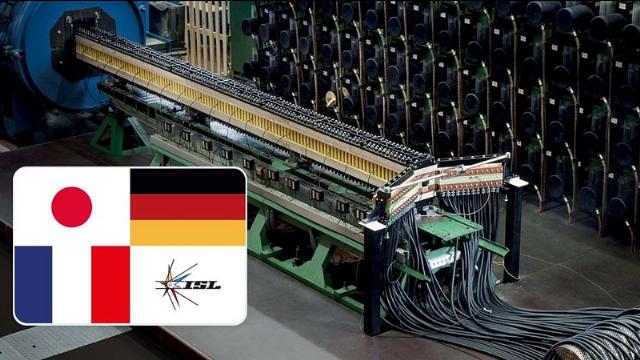A delegation from the Japanese Agency for Procurement, Technology and Logistics (ATLA, subordinate to the Ministry of Defense of the country) visited the Franco-German Research Institute in Saint-Louis (ISL). According to Naval News, scientists from the three countries have agreed to cooperate in the research and development of electromagnetic guns.
The corresponding agreement was signed by three Ministries of Defense – France, Germany and Japan.

Prototype of an electromagnetic cannon
ISL
An electromagnetic cannon (railgun) is a weapon that uses electromagnetic forces to disperse a projectile. In it, the projectile at the first stage of the shot becomes part of an electrical circuit, moving between two contact rails (hence the name of the installation). To fire, the gun needs a short-term supply of high voltage and current, which cannot be provided by a simple connection to the electrical network.
ATLA began its own railgun development program in 2016, and the first demonstration fire tests took place two years later. The last important milestone occurred in October 2023, when the agency conducted the first official tests of the railgun from the ship.
Japanese researchers have been tasked with achieving an initial projectile velocity of 2000 m/s and a barrel life of at least 120 rounds.
In the case of conventional firearms, damage to the barrel is caused by the pressure created by the detonation of gunpowder. In the case of a railgun, there is no such problem. But there are other negative factors: exposure to high temperatures due to strong current flowing through the rail, and wear from contact with the projectile. Initially, Japanese scientists used copper as the material for the barrel guide, but in the course of research they replaced it with an alloy of metals, the composition of which is not disclosed. As a result, it was confirmed that even after 120 shots, the barrel guide did not receive significant damage.
Now the project is moving to the next phase, within which it is necessary to determine how the railgun can be integrated into the armament of ships of the Japanese fleet.
In May 2020, the European Defense Agency (EDA) launched the PILUM railgun development project under the leadership of the Franco-German Saint Louis Research Institute (ISL). European scientists have been tasked with creating a working sample capable of hitting targets at a range of up to 200 km.
Nine participants from five European countries are involved in the project: ISL; the von Karman Research Institute (Belgium), specializing in hydrodynamics; two system integrators – the French Naval Group and Nexter Systems (France); ammunition suppliers Diehl Defense (Germany) and Nexter Munitions (France); the Polish company Explomet, specializing in explosive welding of metals; Italian manufacturer of high-density capacitors ICAR; expert in the management of European joint projects Erdyn Consultants (France).
Testing of the technology demonstrator is planned for 2028.
Although an electromagnetic cannon has a number of advantages (no need to store gunpowder on board a ship, low cost of firing compared to a rocket, etc.), its development is difficult. For example, for a long time, the creation of a railgun for the fleet was carried out in the United States. However, in 2017, the Pentagon, having spent more than $ 500 million on this project, decided to close it. It was claimed that the developed technologies might be able to be used in the future, but at this stage the military department did not see any prospects for practical application of the installation.
Beijing continued its research in this direction. In February 2019, it became known about the successful test of the railgun by the Chinese military, during which the projectile hit a target at a range of 200 km.
